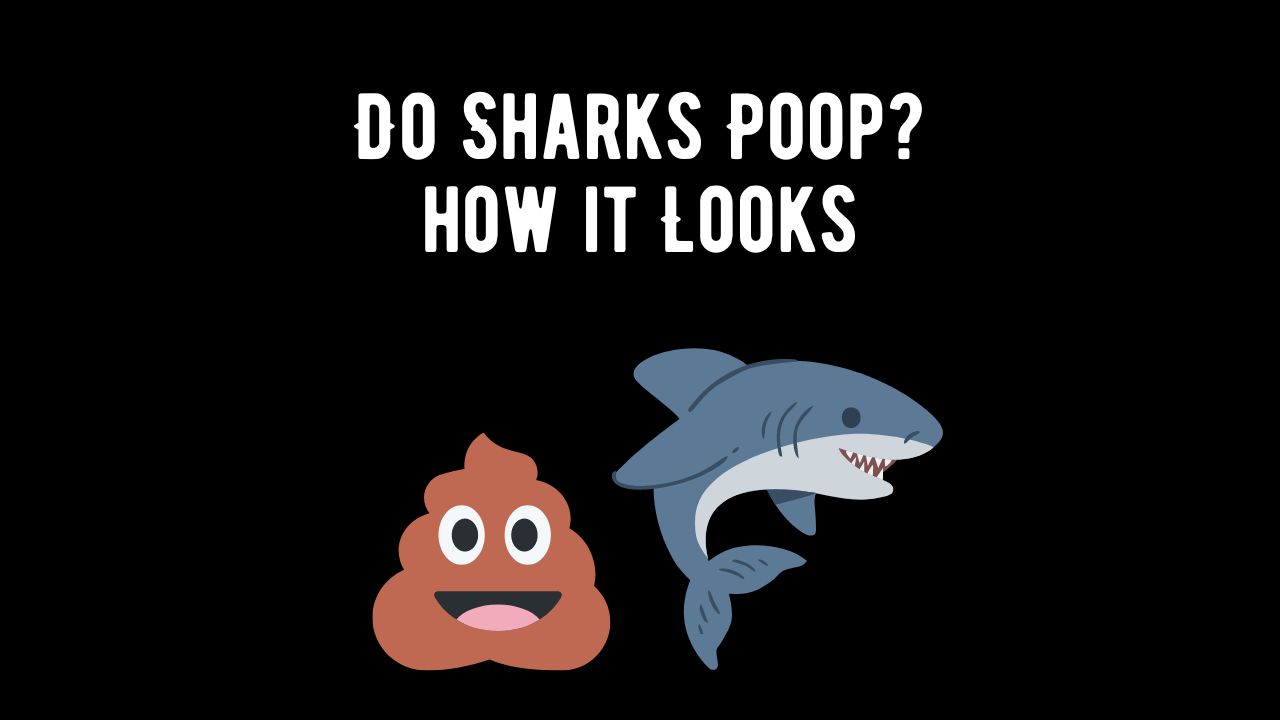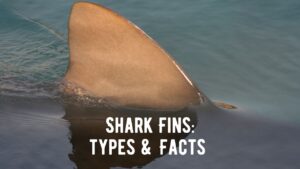
So, What Does Shark Poop Looks Like? Sharks, the majestic predators of the ocean, inspire both awe and curiosity. While much is known about their hunting prowess and unique adaptations, one question that often surfaces is: Do sharks poop? In this comprehensive exploration, we dive into the depths of shark digestion, answering this intriguing question and shedding light on what shark poop looks like.
Understanding Shark Digestive Anatomy
Before delving into the specifics of shark digestion, it’s essential to grasp the basic anatomy that influences their digestive processes.
1. Mouth and Teeth: The Gateway to the Digestive Journey
Sharks boast a variety of tooth shapes and arrangements adapted to their specific diets. Some, like the great white shark, have serrated teeth for tearing flesh, while others, like the filter-feeding whale shark, have numerous small teeth designed for filter-feeding.
2. Stomach: A Temporary Holding Chamber
Unlike the human stomach, a shark’s stomach is not a significant site of digestion. It primarily serves as a temporary storage chamber for food before it moves further into the digestive system.
3. Spiral Valve: Maximizing Nutrient Absorption
The spiral valve is a key feature of shark anatomy that enhances nutrient absorption. It is a corkscrew-shaped structure within the intestine, extending the surface area for nutrient absorption and aiding in the efficient extraction of energy from consumed prey.
4. Liver: Buoyancy and Energy Storage
The liver of sharks is not only crucial for buoyancy but also serves as a site for energy storage. It plays a role in lipid metabolism, storing fats that can sustain sharks during periods of low food availability.
The Digestive Journey
Understanding how sharks process food involves tracing their digestive journey from the moment of consumption to the eventual release of waste.
1. Feeding: The Shark’s Voracious Appetite
Sharks are opportunistic feeders, with their diet varying based on species. Some are apex predators, hunting large marine mammals, while others feed on smaller fish, invertebrates, or plankton.
2. Swallowing Whole: A Formidable Feeding Strategy
Sharks often swallow their prey whole, utilizing their powerful jaws and teeth to incapacitate or break down larger prey into manageable pieces.
3. Stomach Storage: Temporary Rest Stop
In the stomach, food undergoes minimal digestion, as the stomach primarily functions as a storage compartment. The stomach’s limited role in digestion is in stark contrast to mammals, where significant enzymatic breakdown occurs in this organ.
4. Intestinal Adventure: Navigating the Spiral Valve
The real action in shark digestion takes place in the intestine, particularly within the spiral valve. This structure efficiently absorbs nutrients as the partially digested food passes through its convoluted passages.
5. Nutrient Absorption: Extracting Energy for Survival
The walls of the spiral valve contain numerous tiny projections called villi, which increase the surface area available for nutrient absorption. This adaptation allows sharks to extract essential nutrients, such as proteins and fats, from their prey.
6. Waste Formation: The Birth of Shark Poop
As the nutrient-rich material travels through the spiral valve, indigestible parts, along with waste products, are separated. This process ultimately leads to the formation of what is colloquially known as shark poop.
What Does Shark Poop Look Like?
The appearance of shark poop can vary based on the shark’s diet and the nature of its prey. Generally, shark feces are cylindrical and may be compacted or contain identifiable fragments of undigested material. The color can range from brown to black, influenced by the type of prey consumed and the presence of blood.
Factors Influencing Shark Poop Characteristics:
- Dietary Composition: Sharks consuming a diet rich in bony fish may produce feces with more noticeable bone fragments. Those consuming squid or soft-bodied prey might have more homogeneous waste.
- Digestive Efficiency: The efficiency of a shark’s digestive system influences the degree of breakdown in the feces. A well-adapted spiral valve contributes to efficient nutrient extraction, leaving behind waste that may appear more homogeneous.
- Blood Content: The presence of blood in shark poop can impart a darker color. Sharks often consume prey with high blood content, influencing the appearance of their waste.
The Ecological Importance of Shark Poop
While shark poop may seem like a peculiar topic, it plays a vital role in marine ecosystems. The nutrients released through shark waste contribute to the nutrient cycling within ocean ecosystems. These nutrients, derived from the decomposition of prey, enrich the surrounding water, influencing phytoplankton growth and supporting the broader food web.
Key Ecological Roles of Shark Poop:
- Nutrient Cycling: Shark feces introduce organic matter and nutrients back into the ecosystem, promoting a healthy nutrient cycle.
- Phytoplankton Growth: The nutrients released by shark waste contribute to the growth of phytoplankton, the foundation of marine food webs.
- Secondary Productivity: By supporting the growth of primary producers, shark poop indirectly sustains secondary consumers, including fish and marine mammals.
- Biodiversity Influence: The cascading effects of shark waste on nutrient dynamics can influence the diversity and abundance of marine life in a given area.
Characteristics of Shark Poop
Shark poop, also known as feces or scat, can vary in appearance based on the species of shark and its diet. While the specific characteristics may differ, shark poop generally shares some common features. Here are the key aspects of what shark poop looks like:
- Pellet-Like Form:
- Shark feces often takes on a pellet-like form, consisting of compacted masses.
- These pellets are typically a result of the shark’s digestive process, which separates indigestible parts of prey from the nutrients the shark absorbs.
- Color Variation:
- The color of shark poop can vary based on the diet of the shark.
- Diets rich in fish may result in brownish or greenish feces, while sharks that consume marine mammals, such as seals, may produce darker-colored scat.
- Presence of Indigestible Elements:
- Shark poop often contains indigestible elements from the prey, such as scales, bones, and cartilage.
- These components contribute to the pellet-like consistency and may be visible in the feces.
- Odor:
- Shark feces is reported to have a distinct odor, which can be attributed to the decomposition of organic matter in the digestive process.
- The smell is often associated with the breakdown of fish or other marine organisms.
- Texture:
- The texture of shark poop is generally firm due to the compaction of indigestible material.
- The feces may break apart into smaller pellets upon release.
- Floating Characteristics:
- Shark poop may float in water due to the presence of gases produced during the digestive process.
- The buoyancy can be influenced by the type of prey consumed and the specific digestive adaptations of the shark species.
- Location and Habitat:
- The location and habitat of the shark can also influence the appearance of shark poop.
- Sharks in coastal areas or those residing in specific environments may exhibit variations in the composition of their feces.
Shark Poop in Research
1. Studying Diet and Health:
- Analyzing shark poop provides valuable insights into the diet and health of shark populations.
- Researchers can assess the types of prey consumed and identify potential environmental stressors.
2. DNA Analysis:
- Shark poop has become a source of DNA for researchers studying the genetics and population dynamics of different shark species.
- This non-invasive method allows scientists to gather data without directly interacting with the sharks.
Shark Poop Challenges and Conservation
1. Elusiveness of Sharks:
- Sharks can be elusive, making it challenging for researchers to collect fecal samples in the wild.
- Methods such as underwater cameras and environmental DNA (eDNA) analysis have been employed to overcome these challenges.
2. Dietary Variation:
- The variability in shark diets adds complexity to the analysis of poop samples.
- Researchers must consider regional differences, prey availability, and individual dietary preferences.
3. Indicator of Ecosystem Health:
- Monitoring shark poop can serve as an indicator of the health of marine ecosystems.
- Changes in the composition and frequency of shark feces may signal alterations in the ecosystem.
4. Impact of Overfishing:
- Overfishing can disrupt the natural balance of marine environments and influence the nutrient cycling facilitated by shark poop.
- Conservation efforts are crucial to maintaining healthy shark populations and preserving their ecological roles.
Conclusion
In conclusion, the journey of food through a shark’s digestive system is a fascinating process that extends beyond the ocean’s depths. Shark poop, often overlooked, plays a vital role in nutrient cycling, marine fertilization, and scientific research.
Understanding the characteristics of shark feces provides valuable insights into the health and dynamics of marine ecosystems, emphasizing the interconnectedness of ocean life.
As we unravel the mysteries of shark poop, we gain a deeper appreciation for the complex relationships that sustain life beneath the waves and the critical role sharks play in maintaining the balance of our oceans.






